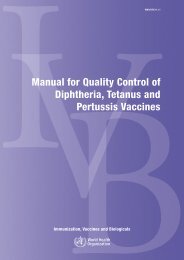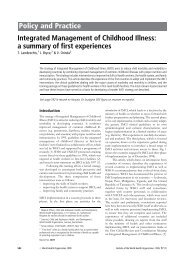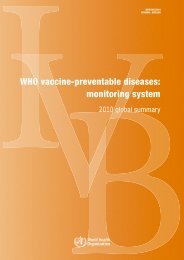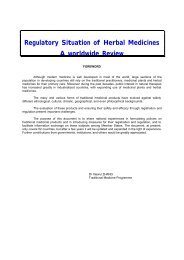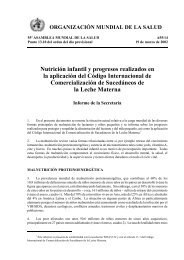IPDE - Extranet Systems - World Health Organization
IPDE - Extranet Systems - World Health Organization
IPDE - Extranet Systems - World Health Organization
Create successful ePaper yourself
Turn your PDF publications into a flip-book with our unique Google optimized e-Paper software.
14 A. W. Loranger<br />
DSM-111-R nosology. It is not considered suitable for use with normals.<br />
The latest version (MCMI-11)" consists of 175 true-false items aggregated<br />
in 20 clinical scales. These in turn are organized into three broad<br />
categories: persistent personality features, current symptom states, and<br />
levels of pathology. Norms for the test are based on several groups of<br />
normal subjects and numerous clinical samples. They include base rate<br />
scores calculated from prevalence data. The claim that it maps the<br />
domain of DSM-111 Axis I1 has been challenged and remains to be<br />
demonstrated."-18 Although more research on this subject needs to be<br />
done, efforts so far to establish a correspondence between the MCMI and<br />
the clinical diagnosis of PDs have been di~appointing.'~-~~<br />
Personality Diagnostic Questionnaire (PDQ-R)<br />
In its revised form the PDQ-R is a 189-item true-false questionnaire<br />
developed by Hyler and ass~ciates.~' The content is keyed to the DSM-<br />
111-R personality disorders. One or more items are devoted to each Axis<br />
I1 criterion, and the wording is close to the criteria. For example, the borderline<br />
criterion, 'Inappropriate, intense anger or lack of control of<br />
anger,' is assessed by these two statements: 'I rarely get so angry that I<br />
lose control' (false) and 'I've often gotten into more real physical fights<br />
than most people' (true). A borderline diagnosis is given when the<br />
respondent answers at least one of the items that sample each of the five<br />
or more criteria required for the diagnosis in the DSM-111-R.<br />
As with the MCMI, studies have generally found a poor correspondence<br />
between the PDQ and personality diagnoses made by clinicians<br />
with and without semistructured inte~views.~'27<br />
Tridimensional Personality Questionnaire (TPQ)<br />
The TPQ,28 developed by Cloninger is a 100-item self-report inventory<br />
that measures three major personality dimensions: novelty seeking, harm<br />
avoidance, and reward dependence. The inventory is based on a theoretical<br />
biosocial model that integrates neuroanatomical and neurophysiological<br />
constructs with learning styles and three personality dimensions.<br />
Normative data are based on a US sample of 1019 adults. The TPQ is<br />
available in a number of languages.<br />
Novelty seeking has four subscales: exploratoly excitability vs stoic<br />
rigidity (9 items), impulsiveness vs reflection (8 items), extravagance vs<br />
reserve (7 items), and disorderliness vs regimentation (10 items). Harm




